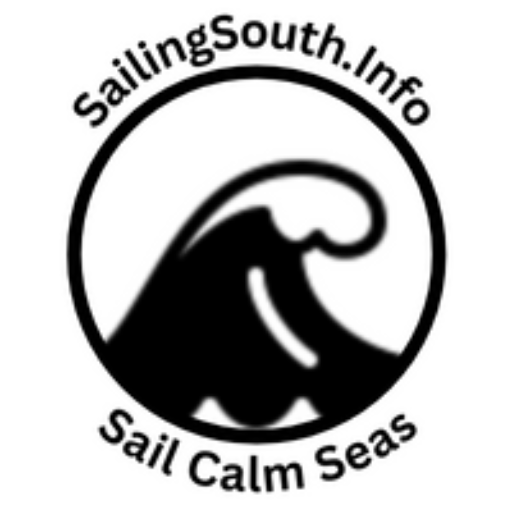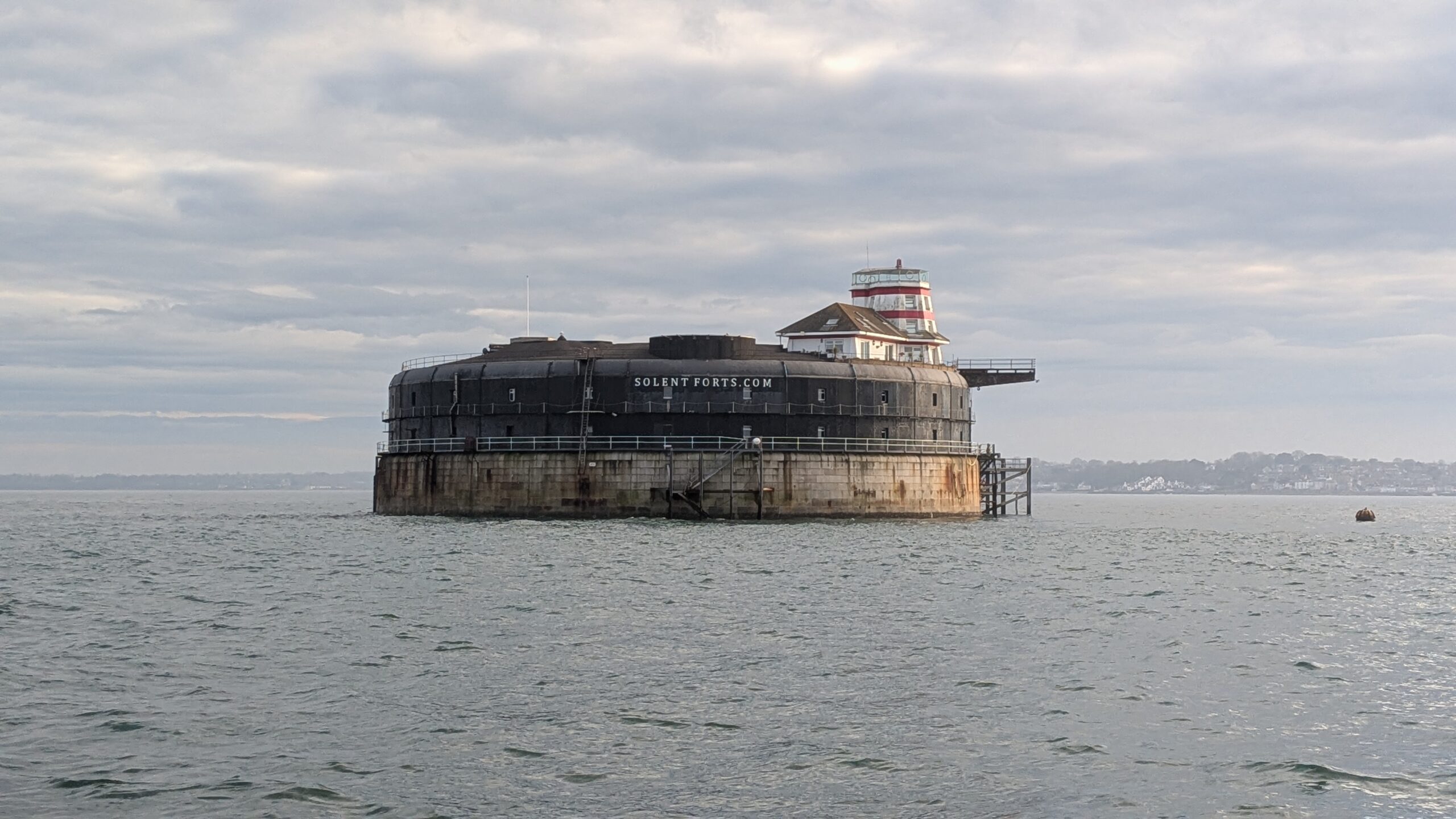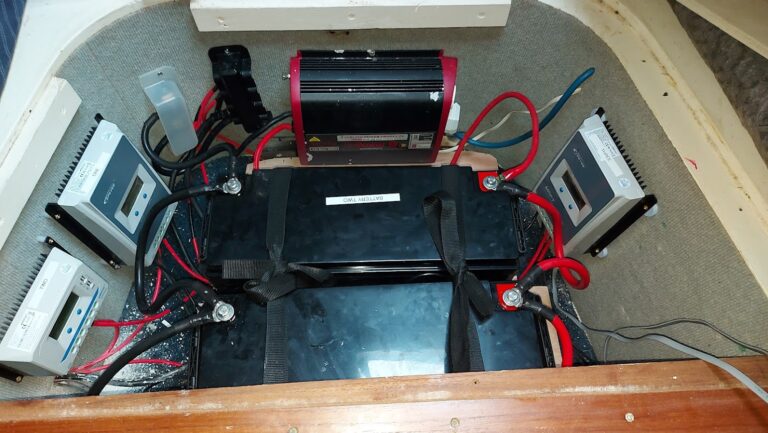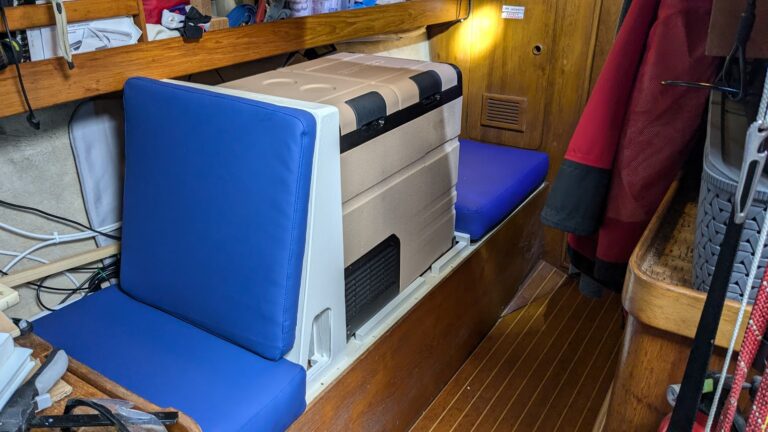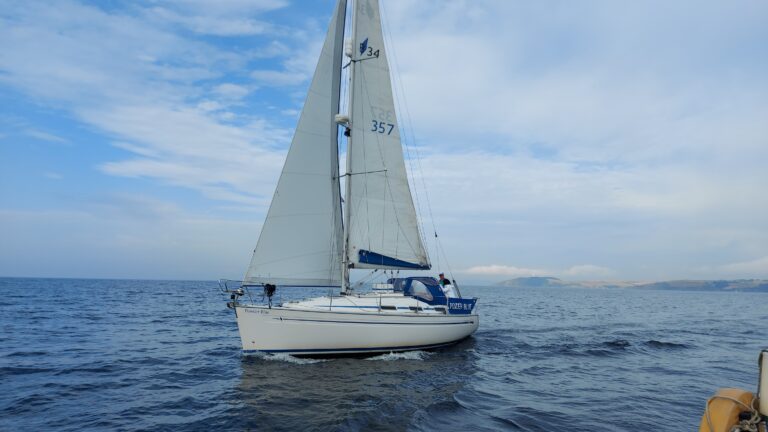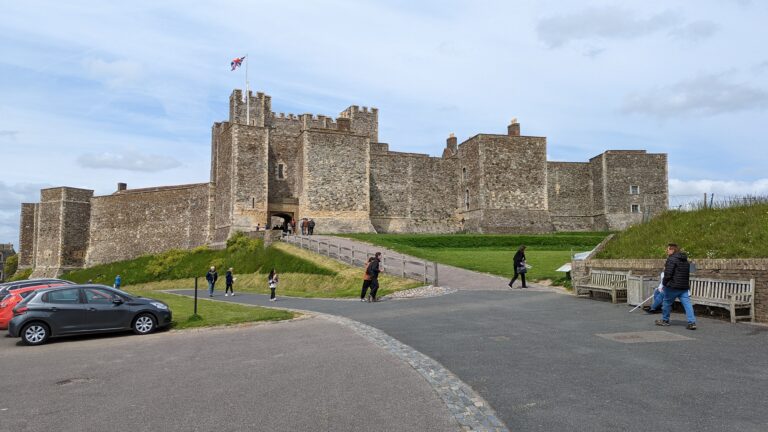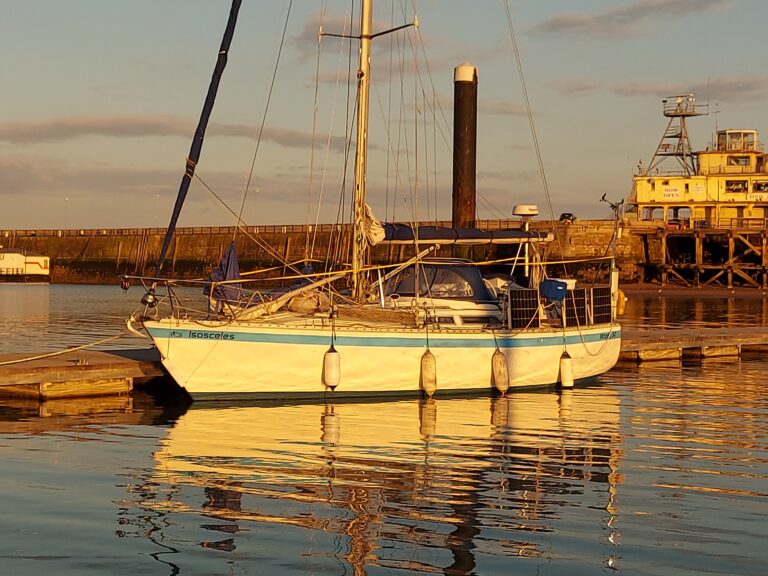Last week saw me stopping off in Brighton, but I was keen to take advantage of the good sailing forecast and move on to the Isle of Wight.
Saturday morning rolled around and the weather looked set for some good sailing. The wind was forecast at Force 3 to 4 from the south east. It wasn’t forecast to be as sunny as Thursdays trip, but it was due to be dry. For March you can’t get a much better forecast for going sailing.
The wind was light in the morning, but there’s nothing unusual about that. Unfortunately the wind never rose above the level of next to nothing for the entire day.
Fishermen and their pot markers
Motoring through the Looe channel I came across one of those things that really gets to me.
I’ve spoken before about the fishing pots and the attached floating markers. Every so often you come across the small black canisters used as pot marker buoys. These are the sort of dangerous thing that some fishermen choose to use. And all too often they come with a rope that floats on top of the water. They genuinely are a danger to life.
Going through the narrow channel one of these small markers was just off the side of the boat. I had completely missed in the shadows of the waves and sunlight reflecting off the water.
A narrow channel with rocks on either side is bad enough. Having something with the potential to wrap itself around the propeller, or steering, or both, just does not bear thinking about. The thought of the boat becoming disabled, with no means of propulsion or steering, and surrounded by rocks. This really started to annoy and grate on me. The glistening black ball sat there in the water, taunting me …
… And then the seal turned his head to the side.
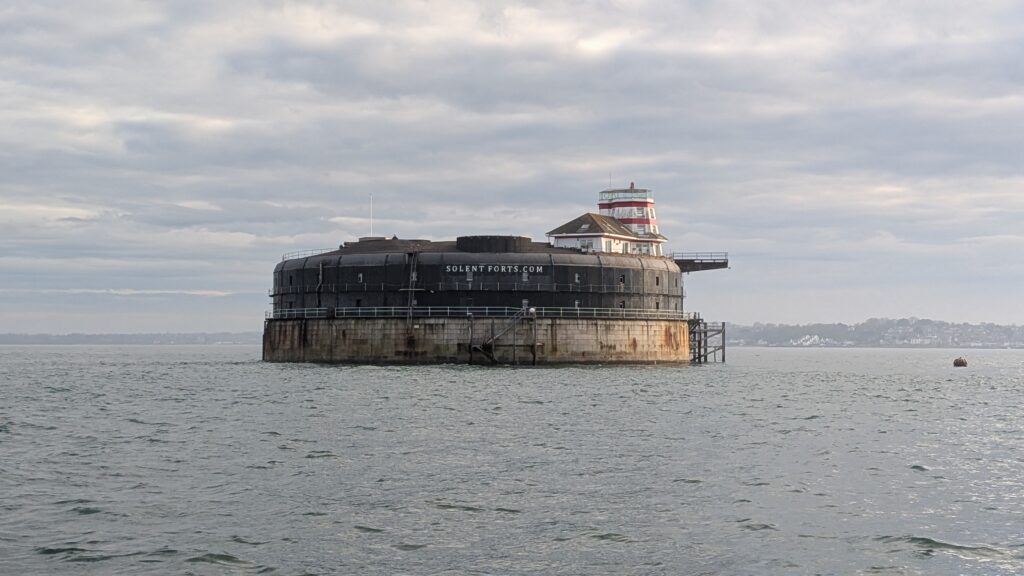
Back in the Solent
The Solent is a magical place for sailing. It offers sheltered waters between the south coast of England and the Isle of White. With the commercial and military ports of Southampton and Portsmouth, along with innumerable places to pleasure boaters, it’s exceptionally busy. Even on a mid March day my AIS system became overloaded, displaying the warning “Max targets reached”. And this is a time well before the sailing season starts.
It also has more than it’s fair share of idiots, like the sail boat that overtook me then cut straight across my bows; or the motor boat that was testing out the principle of “what’s the biggest wake I can make with this boat”. For those that don’t know, a well driven power boat creates very little wake. This is especially true in the calm conditions that were around that particular day.
For these reasons I hate the Solent. I’m here visiting, but already I will be so glad to leave.
I headed up the river Medina towards the Folly Inn and Island harbour. The sun was beginning to go down and the chill was starting to set in as I finally tied up to the pontoons in the middle of the river. I was glad of some warm food and rest after a long day.
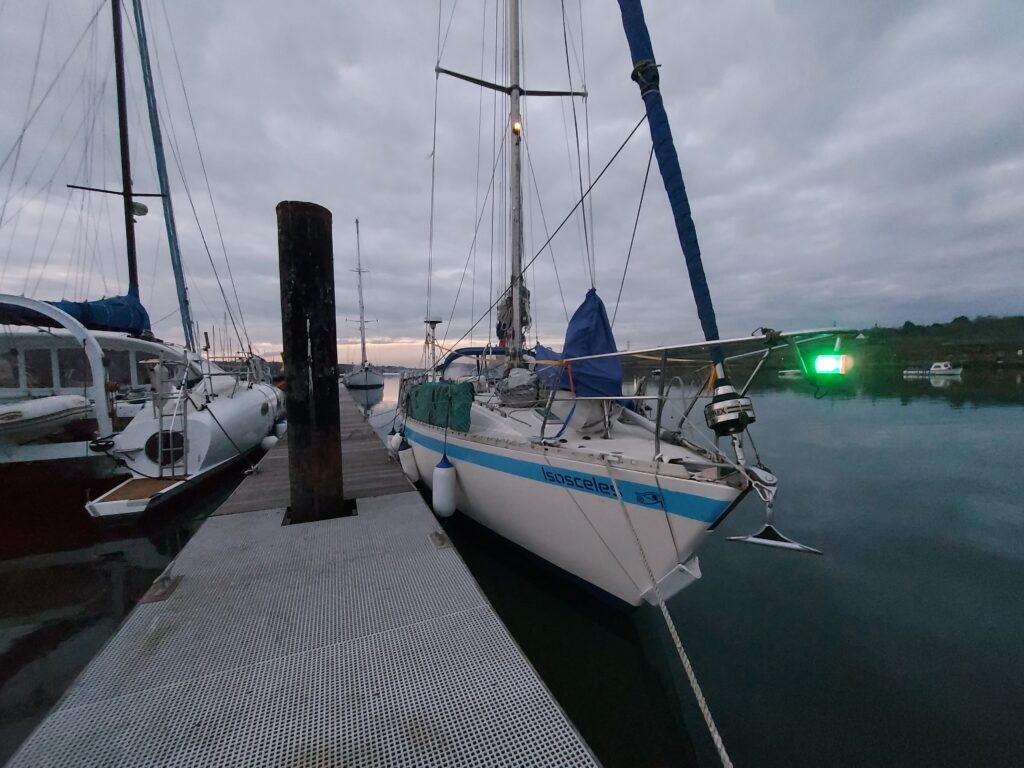
Sunday Morning
I woke early on Sunday morning. There was no sound of the working docks, no boats coming and going. Just the gentle slapping of the water against the hull of the boat. There have been quiet times in the various marina’s I’ve occupied over the last couple of years, but this was instinctively different.
I made coffee and went and sat outside in the cockpit. The sun was breaking through the cloud over the low hills along the river. The warmth of the sun slowly clearing the mist that lingered over the water. There were birds singing in the trees, and the occasional squabbling gulls arguing over the best places to sit and wait for whatever excitement their day would bring.
The local rowing club went gliding their way past. Their long and narrow boats shooting across the water with a grace, ease and speed that seemed to defy the laws of boating. They made it seem effortless. I’m sure, for the people propelling these craft, the effort would seem anything but.
I realised how much I had missed the peace and serenity of staying out on the river. Pulling into a marina has a convenience factor. But they are little more than a glorified, and frequently over priced, caravan parks for boats.
This bought back the pleasure of a life afloat.
Christine knows her own mind
Of course Christine*1, sorry, I mean Isosceles, had her own ideas and was staying put for a few days.
When I had changed the engine a few years ago I’d gone for a swanky professional battery management system. This system splits the charge from the alternator into the three different battery banks; domestic batteries, engine starter battery and the anchor windlass. This worked well, until I changed over to lithium batteries*2 for the domestic electrics.
Lithium batteries*2 draw a higher level of charge from an alternator than old style Lead Acid batteries. Unfortunately this had overloaded the charge management system and burnt it out. The end result was, even after a days motoring from Brighton my engine start battery was flat.
Talking to the engineers and technical types quickly gave me the solution. A simple, elegant and economic system to allow three way charging while the engine is running, but separate the battery systems when the engine stops.
Rebuilding the battery charging system
The idea of any battery management system is to separate the batteries in normal use. However it still needs to allow the alternator to charge all of them when the engine is working. The most important part is to isolate the engine start battery. That way if you lose all power in the other electrical systems you can start the engine to provide that power.
The simplest way of doing this is with battery isolator switches. This is prone to human error and so I’d rather avoid this if I can.
The suggested solution was to me use Solenoid Relays to connect the different batteries to the charging circuit. In simple terms a solenoid relay is like an automatic switch. When activated the Solenoid Relays connects the high power output from the alternator to a second battery bank.
The Solenoid Relays are automatically activated by using the D+ terminal on the back of the alternator. This is normally used to power the alternator warning light in a vehicle. Everything is then connected when the alternator is working, and when the engine is off all of the systems are separated.
I’d like to say this was the end of the problem, but when an alternator becomes suddenly disconnected it has a terminal result on that alternator too. So here I am waiting on the Isle of Wight for a replacement.
Ending on a positive …
On the positive side, it’s been a good test of the solar systems. It’s only March, so the sun and solar output is nothing like summer yet. I’ve been here for 6 days now with no mains electric connection, and all the cooking on board is done with electric. Despite all of this I still have 30 to 40% battery capacity left.
In the summer I should be able to survive as long as my food and water lasts.
All I need now is a working boat to go on with my travels adventures …
*1 If you don’t get the reference to the Stephen King story then you find a rundown of the story here. If you don’t want to take a look don’t worry, just know that my boat very much has a mind of her own sometimes. She clearly wanted to spend a few days sitting on the river.
*2 When I say Lithium batteries, I am talking about Lithium Iron Phosphate (LiFePo4) batteries. These are regulated and inherently safer than the Lithium Ion batteries you find in domestic products, mobile phones and some electric cars. If managed incorrectly Lithium Ion batteries are the ones that get hot and can burst into flames.
